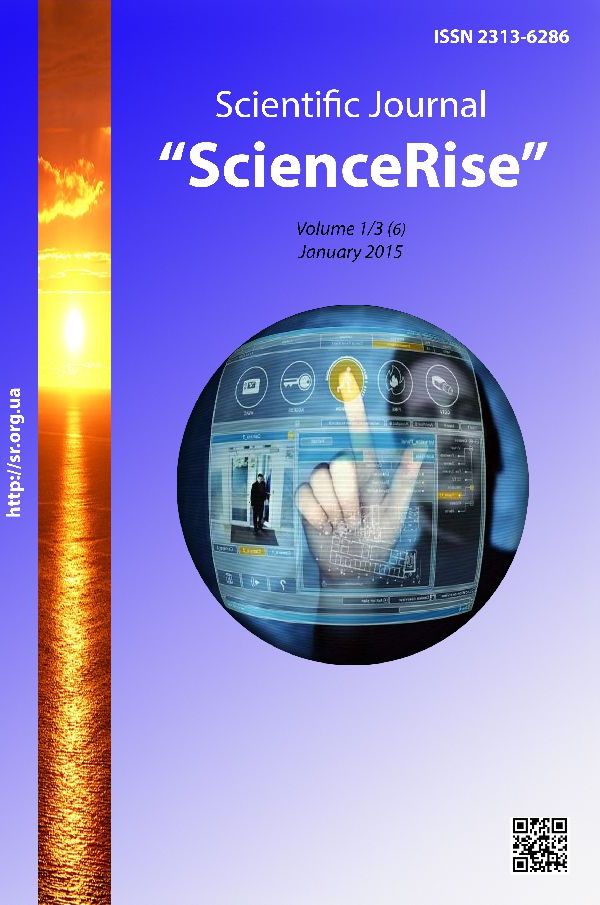Psychological analysis of the emotional estate of a person based on the characteristics of the eye expression
DOI:
https://doi.org/10.15587/2313-8416.2015.36575Keywords:
psychological status, expression of emotions, eyes, emotional state, mastication and speech apparatusAbstract
Clinical dentists know that it is very difficult to find a contact and to interact with patients suffering from diseases of the mastication and speech apparatus. Many researches pay attention to the psychiatric and character deviations of this type of patients. Some of them describe these deviations as psychosomatic, others describe them as physical.
Our goal was to explore the psychiatric and character features of the patients with the pathology of the mastication and speech apparatus and to reveal the specifics of the reduction of the disease symptoms under the influence of the adjuvant therapy. The research is based on the survey of 105 patients before and after the treatment using the “Scale of the emotional state based on the eye expression”. The research revealed the changes in the emotional state of the patients with this pathology according to their eye expression. It means that the research created a new tool for the quantitative and qualitative evaluation of the eye expression as an indicator of the psycho-emotional state of a person - the tool that is additional for the basic psycho-diagnostic tests
References
Maynina, I. N. (2011). The evaluation of the inner individual psychological characteristics of the person by their expression. Moscow, 152.
Chufarovcky, Y. V. (2007). The evaluation of the personality by external signs. "Elitarium" Distance Learning Center. St. Petersburg.
Artyomtseva, N. G. (2003). The perception of the psychological characteristics of a person by "separation" face. IPRAN, 170.
Barabanshikov, V. A., Demidov, A. A. (2007). Perception of individual psychological characteristics of a person in situations of direct and vicarious communication. Bulletin of MGOU, 3, 17–28.
Barabanshikov, V. A., Demidov, A. A. (2008). Evaluation of individual psychological characteristics of a person by his expression. Druzhininskye tchteniya: Proceedings of the 7th Russian Applied Science Conf., Sochi.
Barabanshikov, V. A., Khrisanfova, L. A. (2007). The credibility of the person by the first perception of his face. Methods of psychological structures and their dynamics. Moscow: IP RAS, 117–127.
Diveev, D. A. (2009). The role of the shape of the face in the perception of the individual psychological characteristics of a person. Moscow, 144.
Labunskaya, V. A. (2001). Expression of the human: communication and interpersonal knowledge. SPb: Peter, 544.
Eysenck, H. J. (1975). The evaluation of emotions: psychological parameters and methods. Emotions, their parameters and evaluation. L. Levy, New York, 439–468.
Hanin, Y. L. (1976). Quick Guide to the application of the scale of reactive and personal anxiety by Charles D. Spielberger. Leningrad: LNIIFK, 16.
Bulycheva, E. A. (2010). The differentiated approach to the development of the pathogenetic therapy of patients with dysfunction of the temporomandibular joint, with masticatory muscles hypertension complications. State Medical University. St. Petersburg, 396.
Trezubov, V. N., Karvasarsky, B. D., Bulycheva, E. A., Kolotilschikova, E. A., Chekhlaty, E. I. (2006). The study of the personality of patients with temporomandibular joint disorders (TMJ), with parafunctions of the masticatory muscles complication. Institute of Stomatology, 31, 33–35.
Downloads
Published
Issue
Section
License
Copyright (c) 2015 Владимир Николаевич Трезубов, Елена Анатольевна Булычева, Юлия Викторовна Алпатьева, Дарья Сергеевна Булычева

This work is licensed under a Creative Commons Attribution 4.0 International License.
Our journal abides by the Creative Commons CC BY copyright rights and permissions for open access journals.
Authors, who are published in this journal, agree to the following conditions:
1. The authors reserve the right to authorship of the work and pass the first publication right of this work to the journal under the terms of a Creative Commons CC BY, which allows others to freely distribute the published research with the obligatory reference to the authors of the original work and the first publication of the work in this journal.
2. The authors have the right to conclude separate supplement agreements that relate to non-exclusive work distribution in the form in which it has been published by the journal (for example, to upload the work to the online storage of the journal or publish it as part of a monograph), provided that the reference to the first publication of the work in this journal is included.

